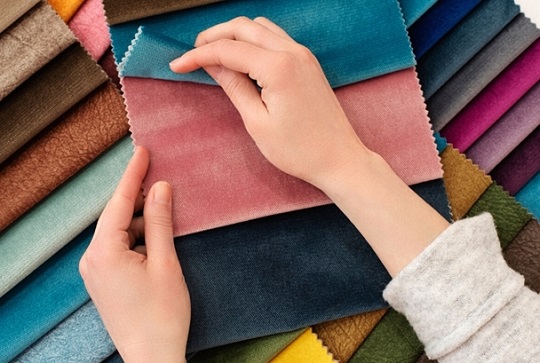10 February 2022
After the UN Climate Change Conference (COP26) late last year, the sustainability world has renewed its focus on tackling climate change. The fashion industry – and related sectors – have an opportunity to take real, meaningful action to address climate challenges and reduce the sector’s carbon emissions.

In 2022, Leather Working Group expects to see an industry start to shift towards embracing a fully holistic ESG focus – covering all environmental, social and governance aspects of global supply chains, from raw material producers to retailers of finished products. Some of the key focus areas we think we’ll see more of this year are:
Increased regulation
We’re already seeing pressure on multiple industries to revolutionize the approach to resource preservation and waste disposal, as well as pushing for greater transparency in consumer messaging.
Indeed, both the EU and UK have announced plans to introduce legislation on deforestation due diligence, which would require that companies selling products in these regions demonstrate that none of their materials have contributed to deforestation.
In addition, the EU Sustainable Products Initiative is driving changes to create more durable, reusable, recyclable, and energy efficient products, forcing businesses to reassess their product design, material sourcing, and packaging.
We’ll also see new legislation from the EU on substantiating environmental performance claims, which will drive more evidence-based consumer communications. We’ll aim to update the LWG Claims Framework in line with proposed legislation on claims wording and substantiation.
As a useful tool when driving meaningful change, it’s likely we’ll see more regulation in this space going forward. At LWG, we will continue to monitor the ongoing situation and provide briefings and updates were relevant.
Focus on circularity
As recyclable products, repairable materials and resale platforms grow in importance, it’s likely we’ll see a renewed focus on durable and long-lasting materials — which includes leather. Making global supply chains circular will also force major brands to re-evaluate their sourcing options by investing in more durable materials, giving greater product life and more repairability options.
A recent study by the FILK Freiberg Institute compared leather to other bio-based alternative materials and found that leather outperformed all nine in terms of its technical performance. As a durable, long-lasting material, leather has a significant role to play in the conversation on circularity, with increased repair offerings popping up from major brands to give leather products a second life.
Reducing emissions
After COP26, major global powers committed to limit global warming through emissions reduction targets. This year, expect to see brands establishing their carbon footprints, as well as assessing how they can work towards meeting their science-based targets.
Here at Leather Working Group, we’re conducting the largest ever lifecycle assessment (LCA) for the leather industry, as well as developing a Carbon Footprint Calculator to aid leather manufacturers in achieving targets to reduce their impact. For the wider industry, this will help to address the global warming targets (such as those outlined at COP26) and support brands and retailers to meet their own targets.
Tackling deforestation & land conversion
Deforestation is at the forefront of all sustainability-minded people and businesses. With a growth in the number and scope of regulations designed to tackle deforestation (such as the EU proposal for regulation on deforestation-free products), many companies will be kicked into gear to make sure they are not sourcing materials and products that expose them to deforestation risk. We’ll likely see an uptick in public commitments to reduce deforestation through organizations such as the Accountability Framework, as well as a push for greater traceability and transparency in global supply chains.
LWG aims to achieve a 100% deforestation and conversion-free (DCF) leather supply chain by 2030 through a range of traceability workstreams. In 2022, we will strengthen our traceability approach and due diligence monitoring requirements related to sourcing leather from regions at high risk of deforestation. To that end, we are currently building a Global Due Diligence Framework in collaboration with NGOs. The framework will be designed for brands and members to use internally and will support with the compliance to EU and international standards.
Science-led decision making
The first step to minimizing our impact on the planet is measuring our impact. Without data on our current performance, it is impossible to set future targets for reduction. In this vein, we’ll likely see more brands commit to the Science Based Targets (SBTs) and focus on better monitoring, data collection and analysis to facilitate informed decision making.
A key focus area for LWG in 2022, will be the launch of our newly redeveloped website that will communicate essential traceability and audit data to our members in an easy-to-digest format within a secure members area.

使用條款 | 隱私政策 | APLF 可持續發展